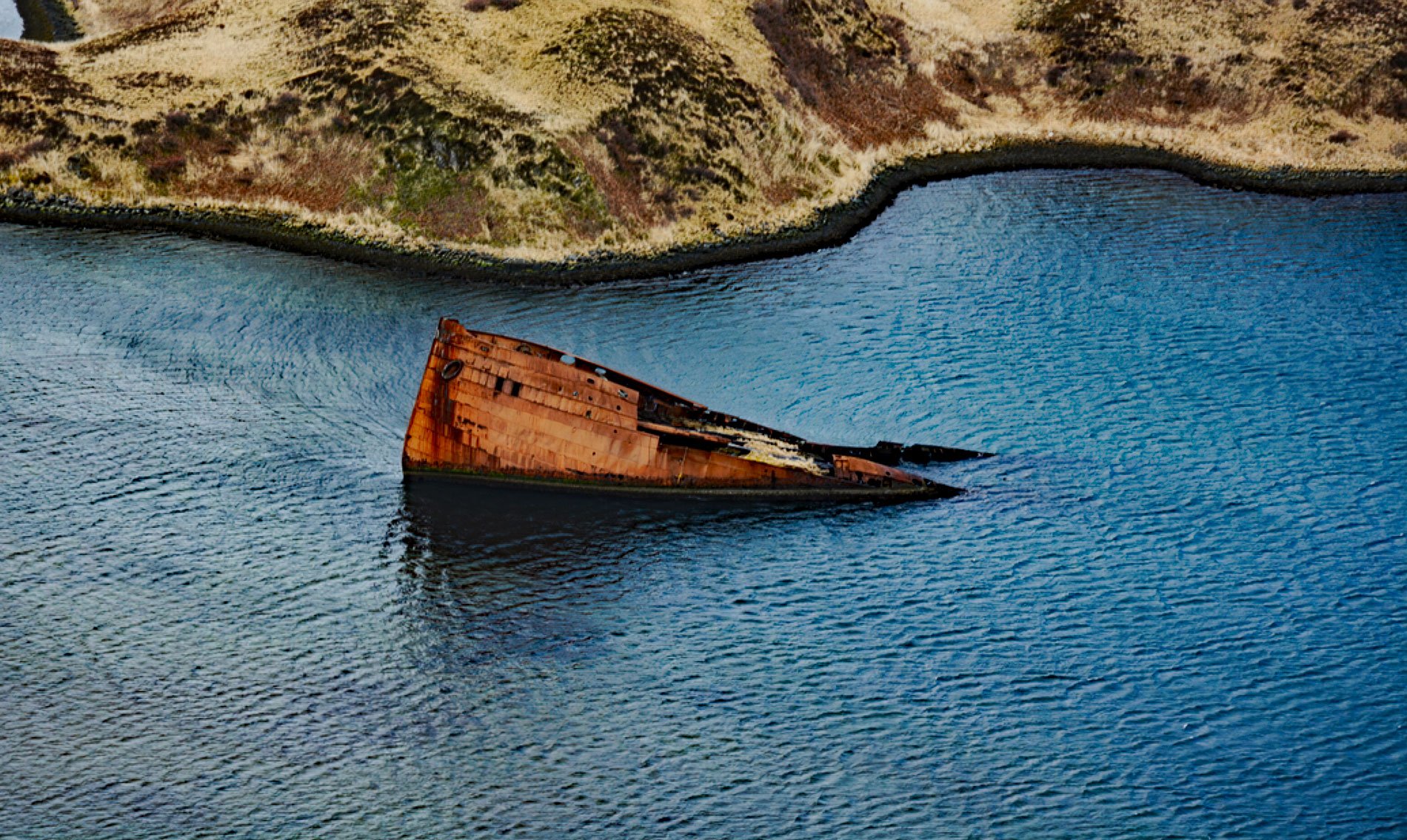Captains Bay is on the northeast coast of Unalaska Island, in the southern arm of Unalaska Bay, about 112 miles (181 km) northeast of Nikolski and 5 miles (8 km) southwest of the community of Unalaska, Alaska. The bay was named for Captain Lieutenant Mikhail Levashov of the Imperial Russian Navy, who spent the winter here in 1768-69. Several shipwrecks are now decaying in the shallows at the head of the bay in an area called Port Levashef, including the wreck of SS Northwestern.
SS Northwestern was a passenger and freight steamship originally launched as SS Orizaba in 1889 by the Delaware River Iron Ship Building and Engine Works in Chester, Pennsylvania, and began a storied career. For 9 years the Northwestern sails the tropical waters of the Gulf of Mexico and the Caribbean Sea. In 1898, she was chartered as a troopship in the Spanish-American War. In March 1906, Northwestern was brought around Cape Horn to work the route between Seattle and various ports in Alaska for the Alaska Steamship Company. For 34 years, Northwestern ran the Alaska Route as a passenger and transport ship. She laid telegraph cable from Unalaska to St. Michael and Nome, carried copper ore from the Kennecott mines, delivered gold from Nome, transported railroad track, mail, coal, cannery workers, and canned salmon. Bound to a schedule, Northwestern sailed summer and winter through sea ice, high winds, and extremely rough seas. There were poor charts and few buoys in the Alaskan waters in the early 1900s and even fewer navigation lights. Often the vessel was lost in fog, relying upon the ship’s whistle and depth soundings to find the safest way. The Northwestern ran aground 14 times, and collided with other vessels 10 times, in addition to ramming several docks. Time and again, newspapers incorrectly announced the ship’s loss and salvage for scrap.
In October 1940, Northwestern tied up at the dock in Dutch Harbor, Amaknak Island to support civilian contractors with Siems-Drake-Puget Sound Company charged with the construction of the nascent Naval Operating Base. Here the aged ocean liner served as a floating hotel, mess hall, and powerplant. On 4 June 1942, the dock and ship were bombed by the Imperial Japanese Air Service, and Northwestern suffered a direct hit which inflicted extensive damage. The ship burned for 3 days, but after the fire was extinguished the coal boilers were started and used to generate power for the naval base. When the war ended, the hulk was loaded with scrap and towed to Captains Bay in anticipation of eventually being towed to Seattle, Washington. Despite U.S. Navy records indicating that she was towed to Seattle, the ship remained in Captains Bay and eventually sank around 1946. Read more here and here. Explore more of Captains Bay here:

